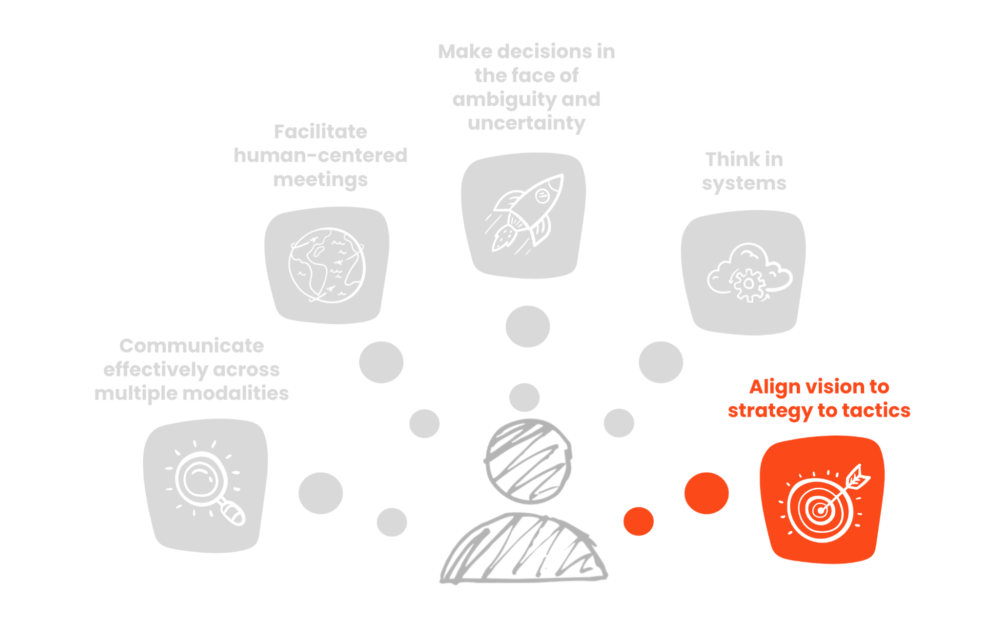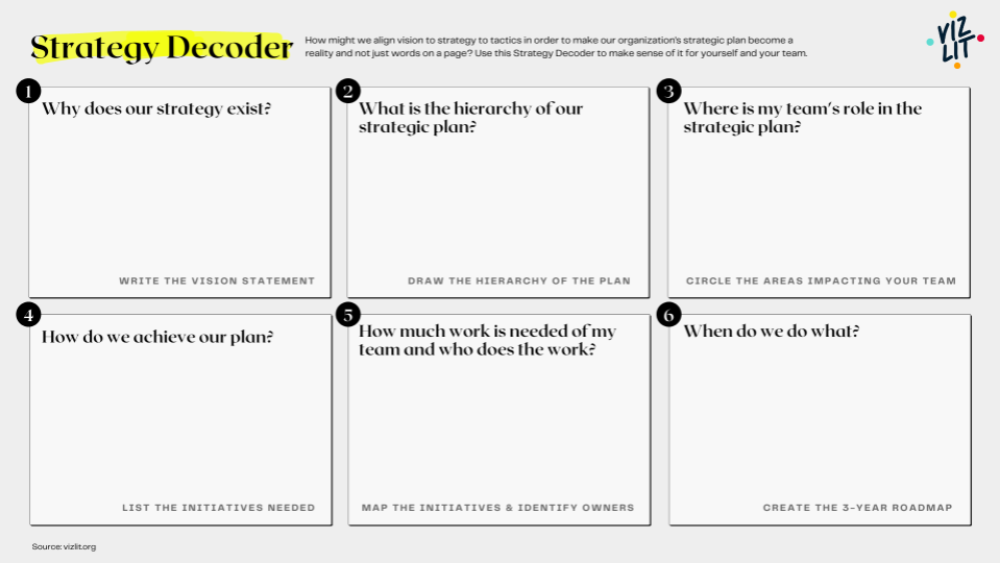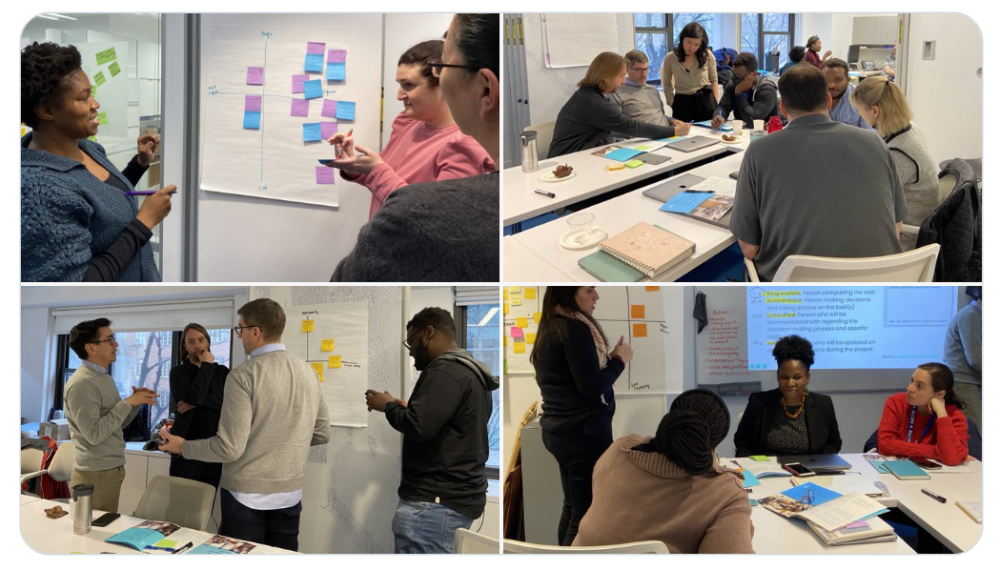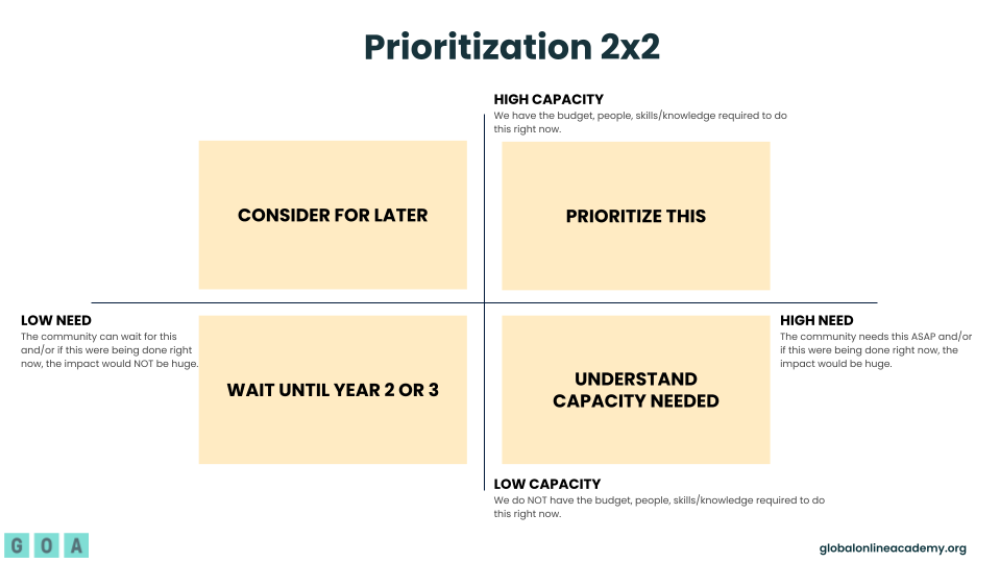From Strategic Plan to Strategic Reality: The Power Middle Leaders Hold
What do school leaders need to make their visions for change a reality?
For the past two years, GOA has worked with more than 500 middle leaders from around the world. We define middle leader as those school administrators who directly support teachers: division leaders and principals, deans and directors, instructional coaches and department chairs, etc. Our work focuses on the five essential competencies of modern, relevant middle leadership that are shown in the image below.
In this post, we want to focus on one of those competencies, Align Vision to Strategy to Tactics, which has become increasingly important as many schools have embraced the opportunity to reimagine and envision a different future given the impacts of the global pandemic and racial reckoning.

GOA’s Portrait of a Leader captures five competencies middle leaders have told us are critical to success in their roles.
From Strategic Plan to Strategic Reality
Middle leaders have a uniquely challenging role in the strategic planning process: while they are rarely involved in the creation of strategic plans, they are often responsible for leading the implementation of those plans. Middle leaders often have to translate the strategic plan into tactics that are both future-focused and responsive to the day-to-day workings of a school and the lived experience of staff, students, and families. At the same time, they are often accountable to senior leadership teams (boards, heads, etc.) to monitor and report on progress.
This position as the “bridge” between strategic plan and strategic reality is complex and challenging. Yet, we’ve found very little support or resources for middle leaders on how to decode and act on strategic plans. As a first step, we created a simple Strategy Decoder.
Decoding Strategic Plans

The Strategy Decoder is adapted from VizLit’s Visual Decoder and is a graphic organizer designed to help leaders understand and plan for the implementation of strategic plans.
We’ve identified six essential questions for decoding strategic plans and created resources and activities to help middle leaders answer each one.
Why does our strategy exist?
What is the hierarchy of our strategic plan?
Where is my team’s role in the strategic plan?
How do we achieve our plan?
How much work is needed of my team and who does the work?
When do we do what?
The first three steps are about meaning-making. When we work with middle leaders, we want them to have an actual strategic plan in hand, either their school’s or an example we provide. By working with an example—annotating it, identifying key passages, rephrasing its language, and wrestling with different interpretations of its goals—we achieve two important outcomes. First, we develop a shared understanding of the plan’s intent. Second, we recognize the plan’s structure and how our work and our teams’ work fit into it.
Naming and Prioritizing Tactics

Using the Strategy Decoder should be a collaborative process that builds shared understanding and purpose among teams.
While the first three steps of the decoder are about developing a shared understanding of the plan’s meaning and intent, the second three steps are about moving from vision and strategy to tactics. Tactics are the concrete actions we take to work towards strategic goals. Many schools define these as initiatives or action items. Defining, prioritizing, and leading initiatives is one of the most important responsibilities of middle leaders, and also one of the most complex. Done well, leading initiatives can invigorate a community and build momentum for deep change. Done poorly, leading initiatives can feel overwhelming or scattered, leading to “initiative fatigue” and a loss of collective purpose.
Steps four to six in the Strategy Decoder start with an initiative inventory and end with the difficult task of prioritization: what are we working on and what do we need to work on? Once the team has that shared inventory, it can begin the process of prioritizing initiatives. We use a 2x2 matrix tool so leaders can more easily assess an initiative’s alignment to the strategic plan and their team’s capacity to complete that work. This makes the difficult decision about what to say “yes” to and what to say “no” to a bit easier and a lot more coherent across leadership teams. It also facilitates the assignment of roles and the creation of an initiative roadmap, which is the final step of the decoder.

Mapping initiatives on a matrix like this one allows teams to visualize their various tasks as well as make hard decisions about what work they can and can’t do.
Finding Ourselves in Strategic Plans
Boards and senior leadership teams can spend a year or more devising strategic plans. How much time and attention do they then give to guide middle leaders in the intentional, ongoing implementation of those plans? We’ve learned from our work with middle leaders that they need time, space, and support to work within and across teams to not just understand strategic plans, but to believe in those plans and in their ability to lead effective implementation. The process of Aligning Vision to Strategy to Tactics does more than simply name and organize the initiatives that we need to pursue; it helps leaders understand the power they have to make a meaningful impact on the trajectory of their schools.
GOA serves students, teachers, and leaders and is comprised of member schools from around the world, including independent, international, charter, and public schools. Learn more about Becoming a Member. Our professional learning opportunities are open to any educator or school team. Follow us on LinkedIn and Twitter. To stay up to date on GOA learning opportunities, sign up for our newsletter.

